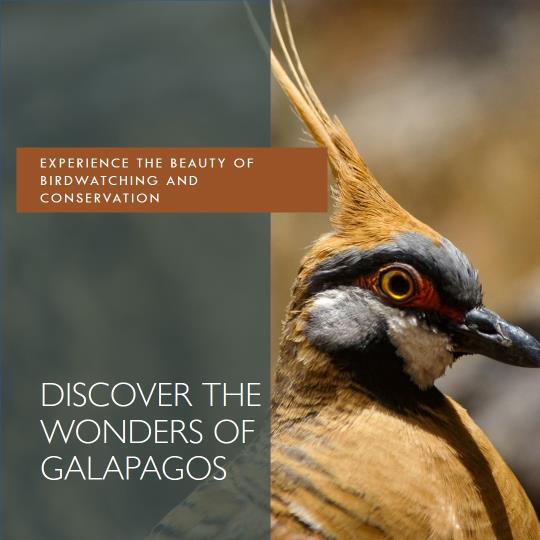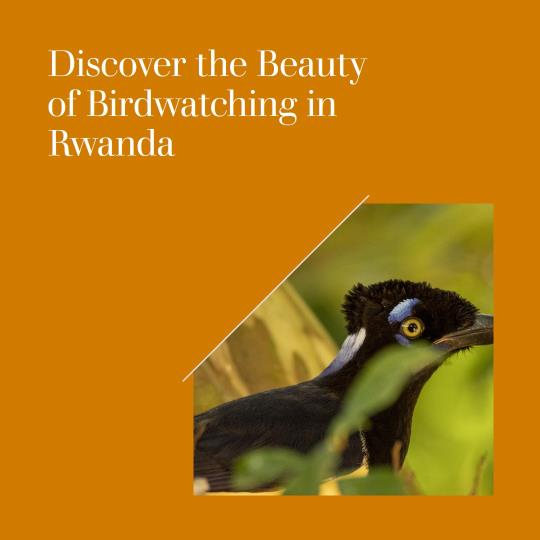Galapagos Islands: Birdwatching and Conservation

🌴🐦The Galapagos Islands, located in the Pacific Ocean, are renowned for their unique biodiversity and stunning landscapes. While the islands are famous for their giant tortoises, marine life, and volcanic formations, they are also a paradise for bird enthusiasts. In this article, we will explore the incredible opportunities for birdwatching in the Galapagos and how this activity plays a crucial role in the conservation efforts of this remarkable archipelago.
Diverse Avian Species 🦉
The Galapagos Islands are home to an impressive array of avian species, many of which are found nowhere else on Earth. Among the most iconic inhabitants are the blue-footed boobies, waved albatrosses, Galapagos penguins, and flightless cormorants. With over 150 recorded species, birdwatchers have a vast spectrum of feathered wonders to observe and admire.
Here are some of the best birdwatching opportunities in the Galapagos:
- Española Island: This island is home to a number of unique seabird species, including the waved albatross, the Nazca booby, and the Galapagos penguin. Visitors can also see frigatebirds, swallow-tailed gulls, and Darwin’s finches on Española.
- Genovesa Island: This island is known for its large colonies of frigatebirds, as well as its Darwin’s finches and red-footed boobies. Visitors can also see swallow-tailed gulls, shearwaters, and tropicbirds on Genovesa.
- Isabela Island: This is the largest island in the Galapagos, and it offers a variety of birdwatching opportunities. Visitors can see Darwin’s finches, Galapagos hawks, Galapagos mockingbirds, and Galapagos doves on Isabela. They can also see seabirds such as frigatebirds, boobies, and pelicans.
- Santa Cruz Island: This island is home to the Charles Darwin Research Station, as well as a variety of birdwatching spots. Visitors can see Darwin’s finches, Galapagos mockingbirds, Galapagos doves, and Galapagos wrens on Santa Cruz. They can also see seabirds such as boobies, pelicans, and frigatebirds.
Birdwatching and Conservation in the Galapagos 🦜
Birdwatching plays an important role in conservation efforts in the Galapagos. By visiting the islands and observing their unique birdlife, tourists can help to raise awareness of the importance of conservation and support local conservation initiatives.
One of the main threats to birds in the Galapagos is the parasitic fly, Philornis downsi. This fly is invasive to the islands and can kill young birds by laying eggs in their nests. Birdwatchers can help to monitor the spread of Philornis downsi by reporting any sightings to the Charles Darwin Research Station.
Another threat to birds in the Galapagos is habitat loss. As the human population on the islands grows, more and more land is being cleared for development. This can lead to the destruction of important nesting and feeding grounds for birds. Birdwatchers can help to protect bird habitat by supporting organizations that are working to conserve land in the Galapagos.
How to Get the Most Out of Your Galapagos Birdwatching Experience
To get the most out of your Galapagos birdwatching experience, it is important to be well-prepared. Here are a few tips:
- Bring a good pair of binoculars. This is essential for getting a good look at the birds.
- Pack a field guide. This will help you to identify the different bird species that you see.
- Hire a knowledgeable guide. A guide can help you to find the best birdwatching spots and identify the birds that you see.
- Be patient. Birds are wild animals, and they may not always be easy to see. Be patient and wait for the best opportunities to get a good look at them.
🌿 Conservation Through Birdwatching 🦚
Birdwatching in the Galapagos is not just a recreational activity; it also plays a pivotal role in conservation efforts. Observing and studying the avian species in their natural habitat helps researchers monitor the health of bird populations and understand the ecological interactions between birds and their environment.
The information gathered through birdwatching expeditions aids in identifying potential threats to these unique species, such as habitat degradation, invasive species, and climate change. By closely monitoring the birds, conservationists can implement targeted strategies to protect these delicate ecosystems and the wildlife that depends on them.
🌎 Responsible Birdwatching 📝
To ensure the long-term sustainability of birdwatching in the Galapagos, it is imperative that visitors and enthusiasts follow responsible practices. Some guidelines to keep in mind include:
- Stay on designated trails: Avoid trampling on fragile habitats or disturbing nesting birds by sticking to designated paths.
- Keep a safe distance: While the birds in the Galapagos may appear tame, it’s essential to maintain a respectful distance to avoid causing stress to the animals.
- No feeding or touching: Resist the urge to feed or touch the wildlife, as human interference can disrupt natural behaviors and harm the animals.
- Support conservation efforts: Consider contributing to local conservation initiatives or organizations working to protect the Galapagos’ unique ecosystems and species.
🔍 Conclusion 🌟
Birdwatching in the Galapagos Islands is a magical experience that allows visitors to connect with nature on an intimate level. Beyond the thrill of spotting rare and endemic bird species, it plays a vital role in the ongoing conservation efforts of this remarkable archipelago. By observing and protecting the avian wonders of the Galapagos, enthusiasts and conservationists alike can help ensure the survival of these unique species for generations to come. So, pack your binoculars and embark on an adventure to discover the captivating world of Galapagos Birdwatching! 🦜🌿🌞






